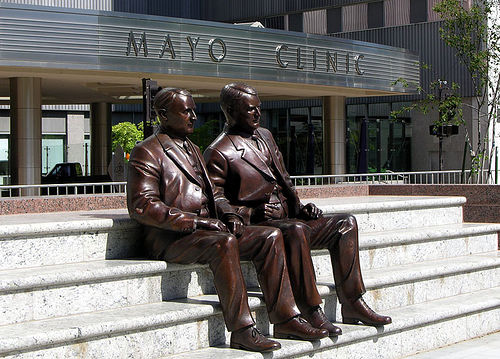 Evolution
Evolution
 Human Origins
Human Origins
Mayo Clinic Paper: Human Biology Makes Sense Outside of the Light of Standard Darwinian Evolution

A new paper in the prestigious medical journal Mayo Clinic Proceedings, “The Childhood Obesity Epidemic as a Result of Nongenetic Evolution: The Maternal Resources Hypothesis,” argues that regarding the basis for inheritance, the modern evolutionary synthesis is fatally flawed. In fact, says Dr. Edward Archer at the University of Alabama, many aspects of human life, physiology, and health do not make sense in the light of the standard neo-Darwinian model.
Referring to the famous adage of Theodosius Dobzhansky, he writes:
Although it may be true that “nothing in biology makes sense except in the light of evolution,” for most of the 20th century, nongenetic vectors of inheritance and the evolutionary consequences of developmental dynamics leading to novel phenotypes were largely ignored. This a priori constraint on heritability and evolution has no empirical or theoretical foundation; however, because theory affects research, clinical practice, and public health policy, the exclusion of nongenetic pathways for the intergenerational transmission of obesity and high-risk phenotypes has been unproductive.
As noted by Harris (1904) more than 100 years ago, “Natural selection may explain the survival of the fittest, but it cannot explain the arrival of the fittest.” Given the heterogeneity of environments into which an organism may be born and the fact that phenotype-environment interactions are the substrate upon which natural selection acts, evolutionary fitness (ie, enhanced survival and reproduction) necessitates mechanisms by which the salient environmental exposures that generated the (successful) phenotype of the mother are translated to the offspring (ie, the “arrival of the fittest”). Because considerable environmental changes commonly occur from one generation to the next, adaptive phenotypes will not necessarily be generated via genetic inheritance. As such, I assert that the “missing heritability” in the rapid phenotypic changes exhibited over the past century (ie, inheritance not explained via genecentric paradigms) will not be found in the genome, and propose a novel conceptualization of inheritance in which nongenetic vectors of evolution (ie, maternal effects [ME] and socioenvironmental and phenotypic evolution [PE]) are the predominant causal elements in the recent rise in the prevalence of childhood obesity.
The article goes on to propose a non-Darwinian model by which childhood obesity has dramatically risen in recent decades largely as the result of non-genetic inheritance, human choices, and medical advances (such as cesarean births) influencing human developmental patterns. Just another paper showing that Darwinism doesn’t explain everything.
